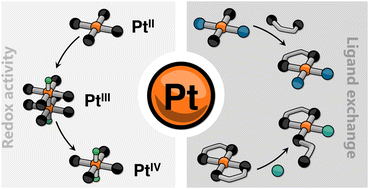Responsive macrocyclic and supramolecular structures powered by platinum
Abstract
Humankind's manipulation of platinum dates back more than two millennia to burial objects. Since then, its use has evolved from purely decorative purposes in jewelry to more functional applications such as in catalysts, pharmaceuticals, and bioimaging agents. Platinum offers a range of properties arguably unmatched by any other metal, including electroactivity, photoluminescence, chromic behaviour, catalysis, redox reactivity, photoreactivity, and stimuli-controlled intermetallic interactions. The vast body of knowledge generated by the exploration of these and other properties of platinum has recently merged with other areas of chemistry such as supramolecular and host–guest chemistry. This has shown us that platinum can incorporate its responsive character into supramolecular assemblies (e.g., macrocycles and polymers) to produce materials with tailorable functions and responses. In this Perspective Article, we cover some platinum-powered supramolecular structures reported by us and others, hoping to inspire new and exciting discoveries in the field.

- This article is part of the themed collection: 2024 Chemical Science Perspective & Review Collection


 Please wait while we load your content...
Please wait while we load your content...